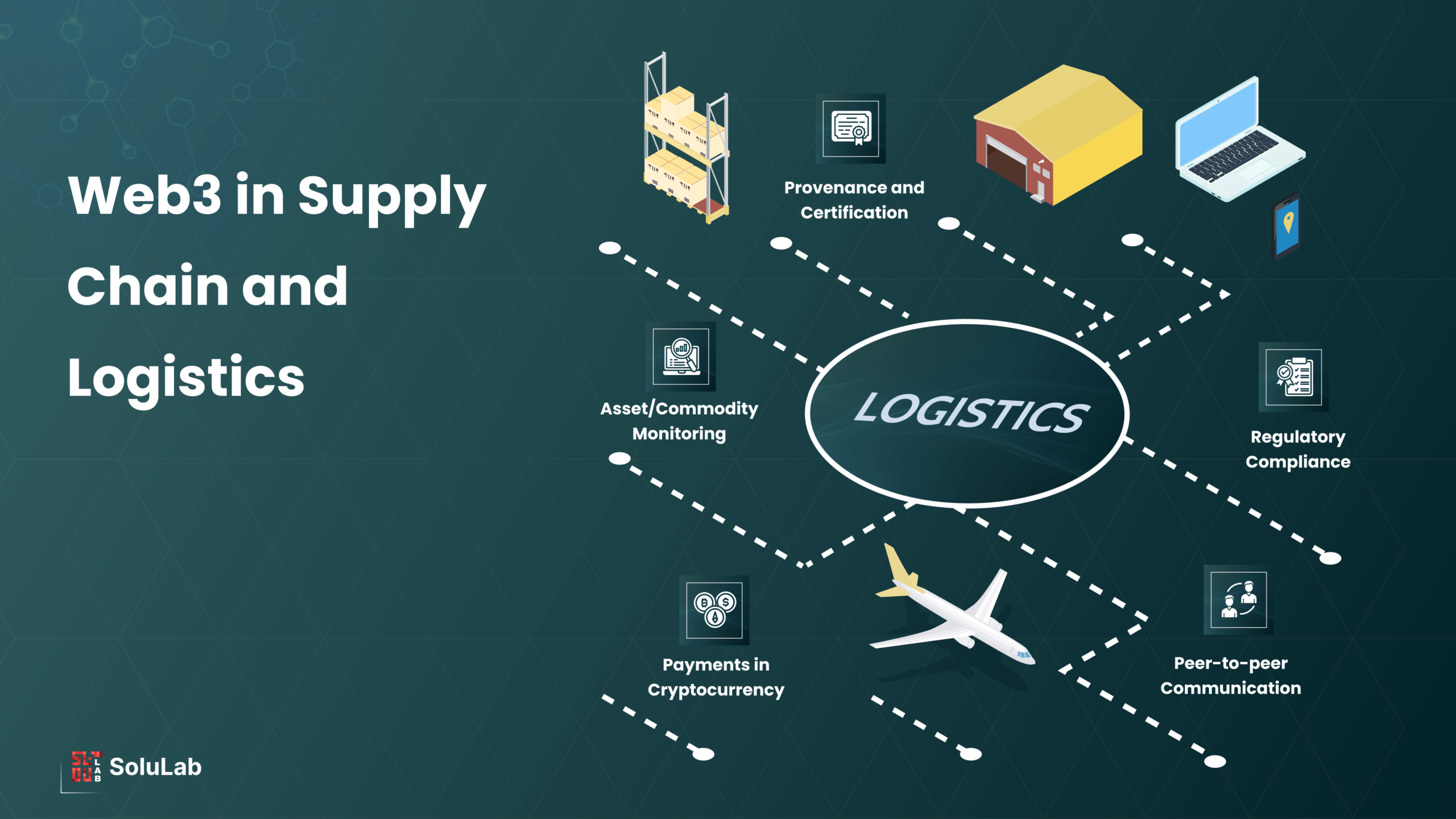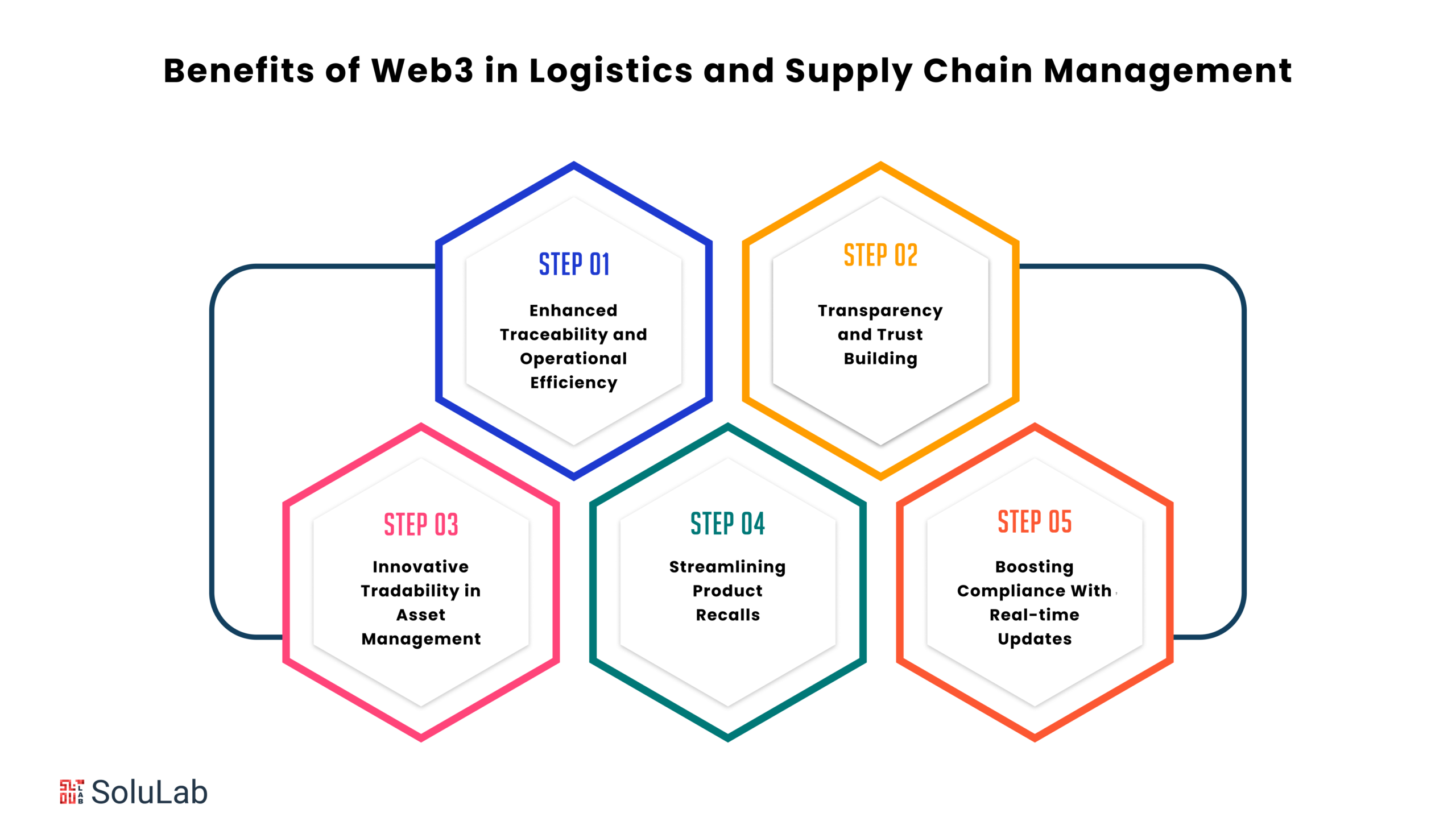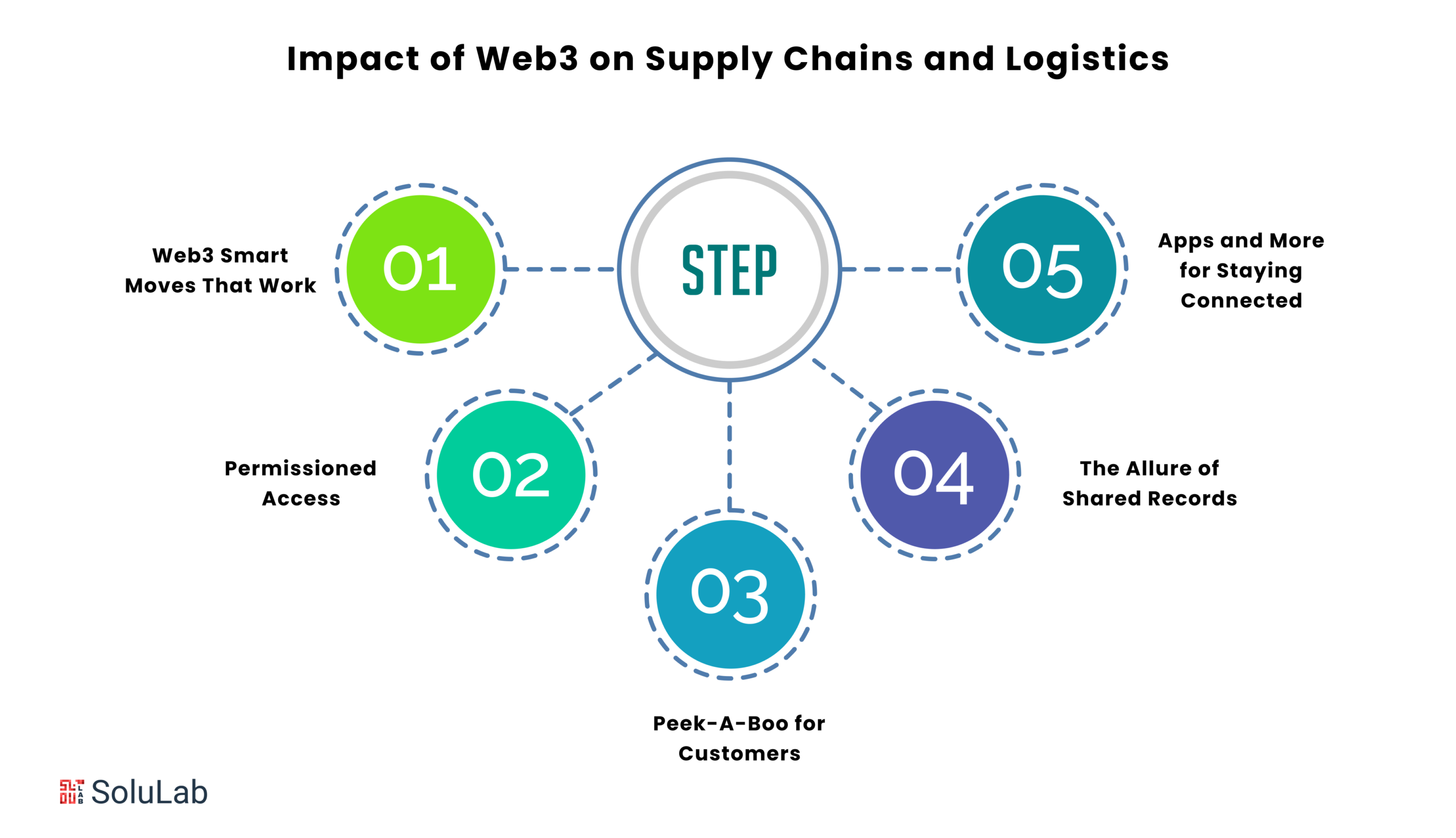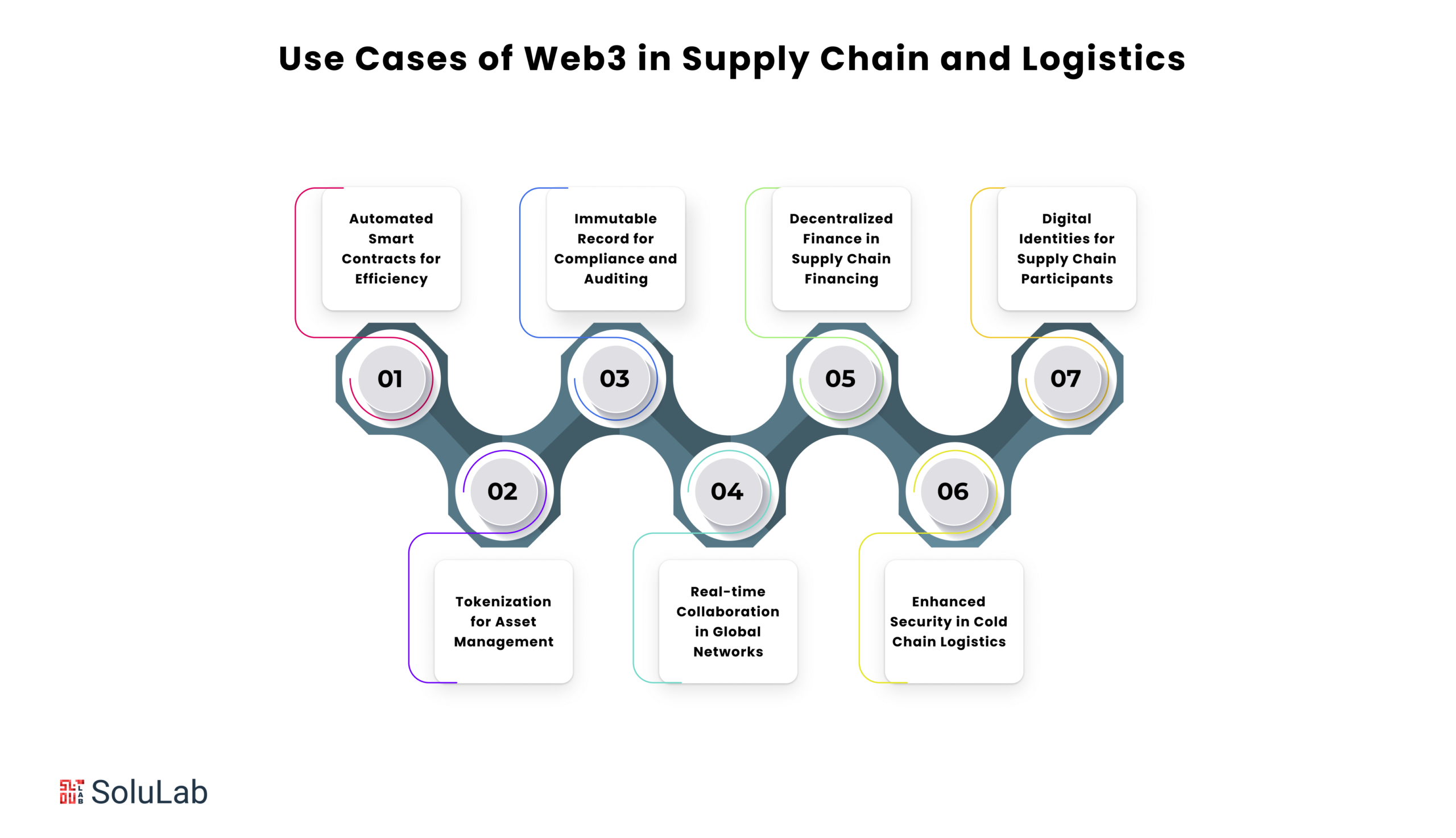
Managing today’s complex supply chains, involving various organizations, suppliers, and distributors, has become increasingly challenging. The supply chain spans multiple stages, geographical locations, invoices, payments, and distributors, extending over months and years. Even before the COVID-19 pandemic, global supply chain management faced challenges due to the limitations of web2. The interconnected and fragile nature of the supply chain made it susceptible to global disruptions, with the inability to predict unforeseen circumstances accurately.
Web2-based supply chain management lacks the traceability and predictive monitoring essential for overseeing different production stages. This has led to high costs for stakeholders and resulted in restrictive and insecure innovations for the shipping and logistics industries, offering little economic value. Global industries heavily depend on paper, particularly the ‘bill of lading,’ with its digital version accounting for only 0.5% of global trade due to the segmented and complex nature of global trade flows.
Innovating supply chain management and logistics, web3 emerges as a valuable solution. It provides a decentralized infrastructure for secure data sharing, offering an alternative paradigm with robust blockchain protocols. Web3 addresses the challenges of data sharing among disparate and competing groups in the supply chain, reducing delays, inconsistencies, and distrust among participants. This innovation becomes a catalyst for overcoming the barriers to digital transformation in supply chains.
In this blog, we will explore the role of Web3 in supply chain management and logistics. So, without any further ado, let’s get started!
What is Web3 in Supply Chain and Logistics?
Web 3.0, also known as web3, utilizes blockchain advancements such as smart contracts, decentralized networks, and digital ledgers to establish transparent, secure, and automated systems for managing supply chains. In the context of supply chains and logistics, web3 involves the application of these blockchain-based solutions to digitize and decentralize transactions. This approach facilitates provenance tracking and establishes trust among involved parties, eliminating the reliance on a single point of failure.
When it comes to eliminating inefficiencies, technological improvements are constantly considered. Web3 offers various applications that effectively remedy the fundamental cause of supply chain inefficiencies.
Smart contracts and decentralized data management, for example, can eliminate the middleman of time-consuming immigration and paperwork that results from international trade. Blockchain is only one aspect of Web3 and its applications. To create sustainable supply chain solutions leveraging Web3 technologies, a combination of AI, Blockchain, and IoT is necessary.
Let’s take a brief look at how Web 3 can bridge the supply chain and logistics industry’s gaps.
Key Features of Web3 Integrated Supply Chain and Logistics
The incorporation of Web3 in supply chain management marks a paradigm shift, offering a dynamic and interconnected environment. This innovation not only ensures real-time traceability but also cultivates trust through verified supplier data and secure digital transactions. The automation facilitated by smart contracts streamlines operations, minimizing delays and enhancing overall efficiency.
The use of blockchain’s timestamping and hashing fortifies the integrity of data, providing an incorruptible record of supply chain events. With heightened security measures and robust audit trails, Web3 integrated supply chains stand at the forefront, fostering resilience and transparency in the modern logistics landscape. Web3 in supply chain and logistics is very secure and has the following distinguishing features:
1. Seamless Tracking: Utilizes distributed ledgers for real-time monitoring of end-to-end activities such as orders, manufacturing workflows, payments, packaging, and transportation.
2. Automated Record Keeping: Transactions and relevant information are automatically validated and securely stored in distributed web3 ledgers, integrating systems like ERPs and IoT data management.
3. Verified Supplier Data: Leverages blockchain for identity management and verification, ensuring trustworthy validation of supplier data and creating an immutable audit trail.
4. Automation Using Smart Contracts: Pre-set instructions and clauses in smart contracts automate supply chain transactions based on agreed-upon conditions, covering aspects like monitoring goods, transportation compliance, and timely payments.
5. Timestamping and Hashing: Generates hash values on the blockchain for data integrity, making the supply chain tamper-resistant; any alteration in one block affects the hash values of subsequent blocks.
6. Security: Implements robust security measures, including data encryption, multi-factor authentication, permissioned chain access, and fraud detection algorithms, enhancing overall security in supply chain management.
7. Digital Transaction Signing: Participants possess digital signatures for seamless e-signing of supply chain transactions, ensuring ownership validation.
8. Audit Trail for Documents: Blockchain-based system keeps a detailed record of changes to contracts, orders, bills of lading, product certificates, and other critical documents, providing transparency and traceability.
9. Registered Supply Chain & Logistics Components: Utilizes blockchain to batch onboarding of products, documents, and locations, adhering to GS1 standards for unified data records and seamless product tracking.
10. Data Validation: Authorized participants with specific validation rights validate transactions, achieving consensus and storage order through selective endorsement on-chain.
Benefits of Web3 in Logistics and Supply Chain Management

The incorporation of Web3 in supply chain management marks a paradigm shift, offering a dynamic and interconnected environment. This innovation not only ensures real-time traceability but also cultivates trust through verified supplier data and secure digital transactions. The automation facilitated by smart contracts streamlines operations, minimizing delays and enhancing overall efficiency. The use of blockchain’s timestamping and hashing fortifies the integrity of data, providing an incorruptible record of supply chain events.
Web3’s blockchain-based solutions provide significant benefits to supply chains and logistics. Among the most prominent benefits are:
1. Enhanced Traceability and Operational Efficiency
Web3, powered by blockchain, revolutionizes supply chain management by ensuring secure and efficient monitoring. It facilitates comprehensive traceability, allowing enterprises to transparently share verifiable product information with consumers, meeting the rising demand for sourcing details.
2. Transparency and Trust Building
Web3 introduces transparency and trust within logistics and supply chain processes through independent hash values and open access. Blockchain verification by network validators authenticates enterprise supply chains, enabling real-time updates and validation, and fostering a transparent and secure ecosystem.
3. Innovative Tradability in Asset Management
Web3’s groundbreaking feature of tradability transforms the traditional marketplace in supply chain and logistics. Through blockchain, participants can tokenization assets, facilitating fractional ownership and real-time digital transfers. This ensures a streamlined and efficient approach to asset ownership and trading.
4. Streamlining Product Recalls
Web3 significantly enhances product recall processes in global supply chains. The technology accelerates the identification of faulty batches, leading to quicker responses and reduced costs. This results in safer products, safeguarding both financial investments and reputations for businesses and ensuring consumer safety.
5. Boosting Compliance With Real-time Updates
Web3 plays a pivotal role in maintaining compliance in supply chains, particularly in industries like pharmaceuticals. The technology streamlines the balancing act of managing medicines, providing real-time updates to all stakeholders. This ensures that rules are promptly followed, and reports remain accurate, enhancing overall operational compliance.
What Impact Will Web3 Have on Supply Chains and Logistics?

Let us now investigate the realm of web3-powered supply chains and logistics. It’s a novel approach to how things work, making procedures more efficient and secure. Here’s how it works:
-
Web3 Smart Moves That Work
There are some explicit requirements for supply chains that use web3. They can be directed by specific authorized individuals or, strangely. They can also run automatically depending on predefined rules. These rules are similar to if-then statements. They ensure that everything runs smoothly.
-
Permissioned Access
The regulated environment is a distinguishing feature of web3-driven supply chains. Consider it a VIP club to which only members on the list have access. Only these few individuals may check and certify supply chain activities, guaranteeing that everything is in order.
-
Peek-A-Boo for Customers
Although it’s a tight ship, certain people, particularly customers like you and me, get a sneak peek. We may examine product specifications and relevant data. This information is safely kept, much like pages in a journal, with dates and all.
Related: Top 10 Web3 Use Cases
-
The Allure of Shared Records
Have you ever played a game in which you pass a message around in a circle? Here’s the catch! The message remains constant across web3 value chains. Like a shared notepad, everybody shares the same record. When someone writes anything new, it is added to everyone’s notepad. Everyone, whether a supplier or a manufacturer, is on the same page (literally!).
-
Apps and More for Staying Connected
Web3 isn’t simply about innovative technology. It’s also simple to use. Simple web tools or mobile applications are used by those in the supply chain, from suppliers to distributors. They use them to communicate with the web3 system in order to exchange information or check on anything.
How Do Web3 Supply Chains and Logistics Work?
Supply chains and logistics create web3-enabled systems by digitizing and decentralizing crucial operations with blockchain networks, distributed ledgers, and smart contracts. Web3 is used in the following ways:
-
Payments in Cryptocurrency
To facilitate safe, verifiable payments between decentralized web3 networks, digital tokens or cryptocurrencies are utilized to execute smart contract conditions automatically. Tokens enable a low-friction worldwide exchange and remittance mechanism.
-
Asset/Commodity Monitoring
Web3 ledgers maintain records of the location, requirements, ownership, and other characteristics of commodities, items, machinery, properties, and other supply chain assets. Real-time asset visibility and authentication improves supervision, maximizes usage, and reduces loss/fraud.
-
Provenance and Certification
Web3 validates and verifies product, supplier, and material environmental, social, and governance qualities. Customers may easily evaluate provenance, standard conformance, and sustainability indicators. It enables the rewarding of ethical activities and the reduction of “greenwashing.”
-
Regulatory Compliance
Permanent, accessible records and verifiable reporting make it easier to comply with food safety, environmental, and fair trade requirements, among others. Compliance is auditable, which reduces expenses and ensures responsibility. Smart contracts can potentially be used to embed and enforce regulations.
-
Peer-to-peer Communication
Web3 networks enable manufacturers, suppliers, shippers, carriers, purchasers, and others to conduct safe and transparent transactions without the use of middlemen. It offers new direct-to-consumer sales channels along with distribution partnerships, which boost efficiency and save costs.
How Can Web3 Help Supply Chain and Logistics Regulatory Compliance and Reporting?
Web3 technology makes regulatory compliance and open records easier to achieve throughout supply chains. Some of the main ways web3 improves compliance and reporting are as follows:
1. Immutable Records
Web3 ledgers produce immutable records of all supply chain actions, occurrences, conditions, and characteristics. Records cannot be edited or withdrawn, leaving an auditable trail for compliance confirmation at any time. Compliance with regulations can be easily reviewed by regulators/auditors.
2. Verified Reporting
Web3 allows for the automatic generation of transparent reports on essential metrics, credentials, operations, and implications for regulatory assessment. The immutable ledger is used to verify reports, building confidence in the data. Reporting expenses are decreasing but supervision is increasing.
3. Integrated Rules and Controls
Regulations and standards may be incorporated directly into web3 smart contracts, networks, and tokens to ensure compliance at a fundamental, automatic level. It reduces non-compliant behaviors and fines, reducing reputational harm and legal implications.
4. Incentives
Web3 enables encouraging and certifying compliance company operations through discounted fees, verifiable credentials, and sustainability ratings with key stakeholders. It promotes a “race to the top” and avenues to continuously enhance compliance management.
5. Audibility
Web3 ledgers’ permanent, transparent, and verifiable nature enables efficient auditing of supply chain processes, transactions, and impacts. Auditors may swiftly examine compliance, identify risks, and verify standards are fulfilled while saving time and money. Problems are easy to identify and correct.
Related: AI Agent In Supply Chain
What is Meant by Bill of Lading in Web3 of Supply Chain and Logistics?
In a web3 supply chain, a bill of lading is a document issued by a carrier that functions as a receipt for the shipment of goods. It provides essential details such as the type, quantity, and location of the commodities being transported. Specifically designed for international trade within the web3 framework, the bill of lading formalizes the agreement between the shipper and the carrier regarding the movement and delivery of goods.
Significance of a Bill of Lading
The bill of lading holds paramount importance as it serves as concrete evidence that a contractual agreement for transporting a specified quantity of goods has been established between the shipper and the carrier. Losing this document could pose challenges, potentially causing delays in the delivery of goods to the intended recipient. Furthermore, the bill of lading acts as proof of the authenticity of the shipped items and their pristine condition before dispatch.
This documentation plays a vital role in determining responsibility and control over the transportation process, indicating who is accountable for moving the items from the sender to the recipient. Additionally, it provides insights into the party responsible for covering freight and customs costs.
Use Cases of Web3 in Supply Chain and Logistics

In embracing web3 supply chain use cases, industries are witnessing a profound shift towards efficiency, transparency, and trust. The transformative potential of blockchain technology and decentralized systems is evident in the seamless tracking and traceability of products, the automation of contractual agreements, and the tokenization of assets. The immutable record-keeping ensures compliance adherence, while real-time collaboration in global networks reduces delays and enhances overall reliability.
The integration of decentralized finance solutions further revolutionizes supply chain financing, fostering innovation in funding models. Security advancements, especially in sensitive areas like cold chain logistics, guarantee the integrity of transported goods. As industries navigate the web3 landscape, digital identities for supply chain participants emerge as a cornerstone, reinforcing the commitment to authenticity and accountability. These developments collectively signify a paradigm shift in supply chain dynamics, setting the stage for a future characterized by resilience, efficiency, and heightened collaboration.
So, here are some of the use cases of Web3 in Supply Chain and Logistics:
1. Automated Smart Contracts for Efficiency: Implementing smart contracts on the web3 platform automates various supply chain processes. This is particularly beneficial for industries like manufacturing, where predefined rules can automatically trigger actions, such as order processing, inventory management, and payment settlements.
2. Tokenization for Asset Management: Web3 facilitates the tokenization of physical assets, allowing fractional ownership and trade. This is especially impactful in the logistics and transportation sector, where assets like containers, trucks, and warehouses can be tokenized, enhancing liquidity and facilitating real-time ownership transfers.
3. Immutable Record for Compliance and Auditing: The use of blockchain in web3 supply chains ensures an immutable record of all transactions, contributing to streamlined compliance and auditing processes. Industries such as pharmaceuticals benefit by maintaining a secure and unalterable record of drug manufacturing, distribution, and compliance adherence.
4. Real-time Collaboration in Global Networks: Web3 enables real-time collaboration among supply chain participants across the globe. This is particularly advantageous for industries with complex and global supply networks, such as electronics manufacturing, as stakeholders can access and update shared information instantly, reducing delays and errors.
5. Decentralized Finance (DeFi) in Supply Chain Financing: Web3 introduces decentralized finance (DeFi) solutions, enabling innovative financing models in supply chains. This is beneficial for sectors like retail, where suppliers can access decentralized funding options based on transparent and verifiable supply chain data.
6. Enhanced Security in Cold Chain Logistics: Web3 technologies enhance the security of cold chain logistics, ensuring the integrity of temperature-sensitive products during transportation. Industries dealing with pharmaceuticals, biotechnology, and perishable goods benefit from a tamper-proof and secure supply chain.
7. Digital Identities for Supply Chain Participants: Web3 introduces digital identities for supply chain participants, enhancing security and trust. This is crucial in industries like aerospace and defense, where verifying the authenticity of components and ensuring the integrity of the supply chain is paramount.
These use cases showcase the transformative potential of web3 in revolutionizing traditional supply chains, bringing about increased efficiency, transparency, and security across diverse industries.
Web and the Future of Logistics and Supply Chain
Supply chain management and logistics are being transformed by Web 3 technology. Blockchain, smart contracts, decentralized networks, and other web3 technologies provide scalability, transparency, safety, effectiveness, and trust. They automate and decentralize critical processes in order to improve operations, minimize waste, assure compliance, and promote global interchange across numerous partners.
Web 3 shows the origin, location, ownership, and qualities of all items, assets, materials, information, transactions, events, and impacts across vast supply networks. Real-time visibility enhances supervision, while verifiability fosters confidence. Fraud and inefficiencies are reduced, cost savings are increased, and sustainability is encouraged.
Concluding Remarks
In conclusion, the integration of Web3 technologies into supply chain and logistics marks a transformative leap towards a more transparent, efficient, and decentralized ecosystem. The decentralized nature of Web3, facilitated by blockchain and smart contracts, ensures trust and transparency in every step of the supply chain. This innovation not only reduces the risk of fraud but also streamlines processes, minimizes delays, and enhances overall operational resilience. The potential impact of Web3 in supply chain and logistics is vast, promising a future where stakeholders across the network can seamlessly collaborate in real time, fostering a new era of trust and efficiency.
At SoluLab- a Web3 development company, we recognize the immense possibilities that Web3 brings to the supply chain and logistics industry. Our expertise in blockchain and decentralized technologies positions us as a reliable partner for businesses seeking to harness the power of Web3 for their logistics needs. Whether it’s implementing blockchain solutions, developing smart contracts, or integrating decentralized applications, SoluLab is committed to providing modern Web3 development services. If you’re ready to unlock the full potential of Web3 in your supply chain, contact us today for a consultation, and let us guide you toward a more connected, secure, and efficient future. Take the first step towards revolutionizing your logistics processes with SoluLab – your trusted partner in Web3 solutions.
FAQs
1. What is the primary role of web3 in supply chain and logistics?
Web3 revolutionizes supply chain and logistics by leveraging blockchain technology, enabling transparent traceability, automated processes through smart contracts, and the introduction of decentralized finance solutions. It enhances security, real-time collaboration, and the tokenization of assets, fundamentally transforming traditional supply chain dynamics.
2. How does web3 ensure the security of supply chain transactions?
Web3 ensures security through the implementation of blockchain, which creates an immutable record of all transactions. The decentralized and cryptographic nature of blockchain guarantees tamper-proof data, safeguarding sensitive information and maintaining the integrity of the supply chain.
3. Can web3 be integrated into existing supply chain frameworks?
Yes, web3 can be seamlessly integrated into existing supply chain frameworks. Solutions like SoluLab specialize in providing tailored services to integrate web3 innovations, such as smart contracts and decentralized finance, into traditional supply chain and logistics processes.
4. How does web3 contribute to real-time collaboration in global supply networks?
Web3 facilitates real-time collaboration by enabling instant access and updates to shared information across global supply networks. This is particularly beneficial for industries with complex and widespread supply chains, allowing stakeholders to stay informed and aligned with the latest data.
5. What role does SoluLab play in supporting businesses with web3 services for supply chain and logistics?
SoluLab is a strategic partner offering expertise in blockchain development and web3 services. From implementing smart contracts to ensuring secure decentralized networks, SoluLab provides tailored solutions to help businesses seamlessly integrate web3 innovations, enhancing efficiency and transparency in their supply chain and logistics operations.






